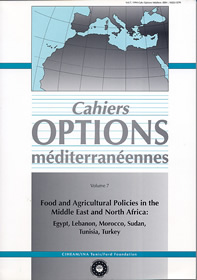| Article précédent | p. 157-179 | Article suivant |
Development strategies in the agricultural sector of the Sudan: 1970-1990
Agriculture constitutes the mainstay of the Sudanese economy. It contributes an annual average of thirty-seven percent of Gross Domestic Product and almost all of Sudan's foreign exchange earnings. Most importantly, the sector is the main source of food, not only directly through domestic food production but also indirectly through the provision of foreign exchange from non-food exports for the importation of food and agricultural inputs used in domestic food production. The main purpose of the present paper is to identify the development strategies adopted during the period from 1970 to the present, particularly those related to the agricultural sector. The Sudanese economy experiences a steady decline which manifested itself in the deterioration in per capita income, a substantially low and declining level of actual investment, intensive inflationary pressures, severe balance of payments problems, and mounting external debt and debt servicing obligations. During the two development programs (1988/89-1991/92 and 1990/91-1992/93) emphasis was placed on agriculture as a leading sector because it generates almost all foreign exchange earnings and produces food. The plans also attached high importance to an import-substitution industrialization strategy.
- [ Télécharger ]
- [ Exporter la citation ]
Vous pouvez télécharger la citation au format :
- [ Imprimer ]
- [OMC07]




